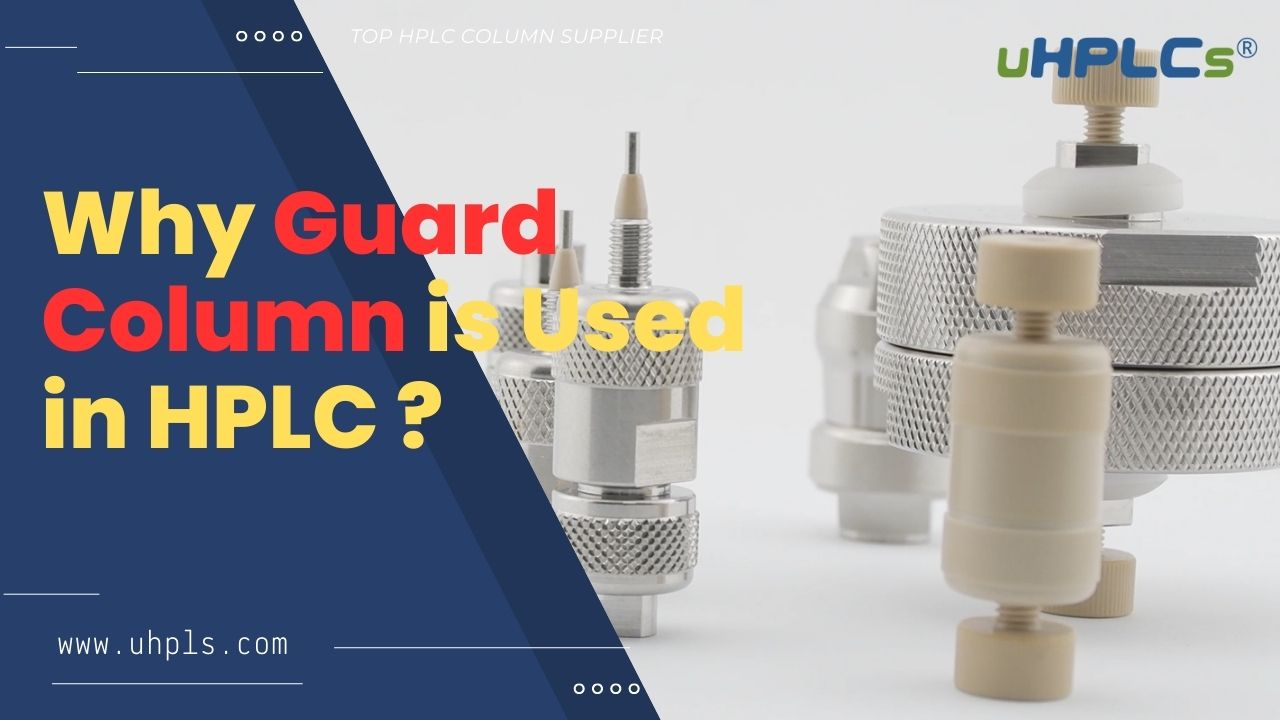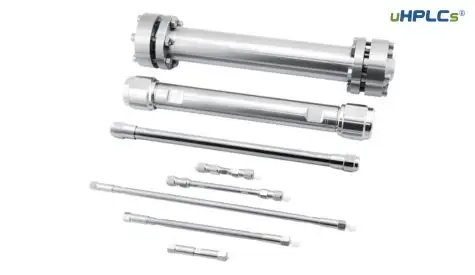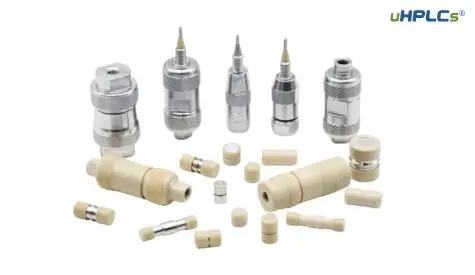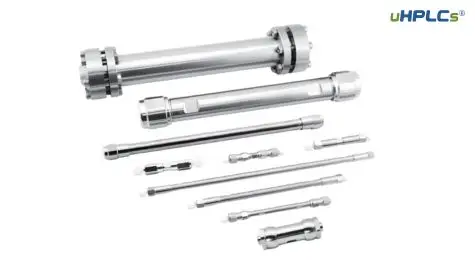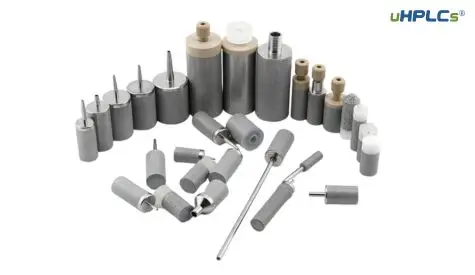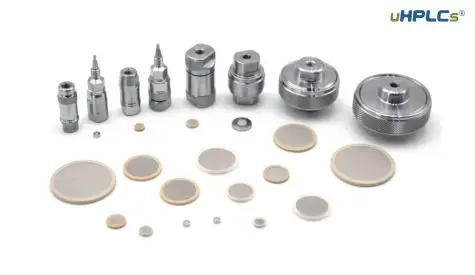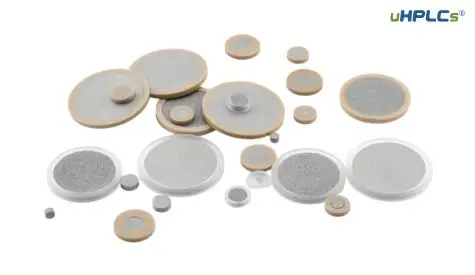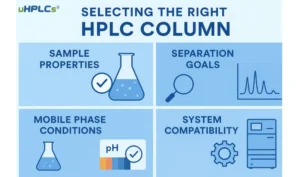Introduction
High-Performance Liquid Chromatography (HPLC) is a widely used analytical technique in the field of chemistry. It is employed to separate, identify, and quantify components of a sample mixture. HPLC is known for its high sensitivity and accuracy in analyzing complex samples. One crucial component that plays a significant role in ensuring the efficiency and longevity of an HPLC system is the guard column. In this article, we will explore the purpose, function, advantages, types, installation, maintenance, and troubleshooting of guard columns in HPLC systems.
1. What is HPLC?
Before delving into the details of guard columns, it’s important to understand the fundamentals of HPLC. High-Performance Liquid Chromatography is a chromatographic technique used to separate and analyze components of a sample. It involves the passage of a mobile phase (liquid) through a stationary phase (solid or liquid) to separate the analytes based on their physicochemical properties.
2. Importance of Guard Columns in HPLC
Guard columns act as the first line of defense in an HPLC system. They are placed before the analytical column to protect it from contaminants and prolong its lifespan. The presence of impurities, such as particulates, strongly retained compounds, or matrix components, can lead to column clogging, decreased efficiency, and loss of resolution. Guard columns prevent these issues and ensure optimal performance of the analytical column.
3. Purpose and Function of Guard Columns
The primary purpose of a guard column is to trap and remove impurities before they reach the analytical column. It acts as a sacrificial column that can be easily replaced, allowing for cost-effective maintenance of the HPLC system. Guard columns effectively extend the lifetime of the analytical column by preventing irreversible damage caused by impurities.
The function of a guard column can be summarized as follows:
- Removal of particulates: Guard columns have a larger particle size compared to the analytical column, allowing them to efficiently capture and retain particulate matter that could otherwise clog the analytical column.
- Retention of strongly retained compounds: Some compounds have a strong affinity for the stationary phase of the analytical column, leading to their prolonged retention. Guard columns can retain these compounds, preventing their accumulation on the analytical column.
- Protection against matrix components: Samples in HPLC often contain matrix components, such as proteins or lipids, which can interfere with the separation and analysis. Guard columns provide an additional barrier to prevent the interaction of these matrix components with the analytical column.
4. Advantages of Using Guard Columns
Using guard columns in HPLC systems offers several advantages, including:
- Enhanced column protection: Guard columns provide an extra layer of protection for the analytical column, preventing contamination and prolonging its lifespan.
- Improved chromatographic performance: By removing impurities and particulates, guard columns help maintain optimal column efficiency, leading to better resolution, peak shape, and sensitivity.
- Cost-effective maintenance: Guard columns are relatively inexpensive compared to analytical columns. They can be easily replaced, reducing the need for frequent replacement of the more expensive analytical column.
5. Types of Guard Columns
Guard columns are available in various configurations to suit different HPLC applications. The two main types of guard columns are:
-
Packed Guard Columns: These guard columns consist of a packed bed of the same stationary phase material as the analytical column. They are connected in-line before the analytical column and provide efficient trapping of impurities.
-
Monolithic Guard Columns: Monolithic guard columns have a continuous stationary phase structure, which offers lower backpressure and higher flow rates compared to packed guard columns. They are particularly useful for high-speed separations and compatibility with high-performance HPLC systems.
6. Installation and Maintenance of Guard Columns
Installing a guard column in an HPLC system is a relatively simple process. It involves connecting the guard column in-line before the analytical column using appropriate fittings or connectors. The guard column can be easily replaced by disconnecting it and installing a new one when necessary.
Routine maintenance of guard columns is essential to ensure their optimal performance. This includes regular inspection, cleaning, and replacement. The frequency of replacement depends on the sample matrix, analyte load, and the level of impurities encountered during analysis.
7. Factors to Consider When Choosing a Guard Column
When selecting a guard column for an HPLC system, several factors should be taken into account:
- Compatibility: The guard column should be compatible with the stationary phase of the analytical column to ensure efficient trapping of impurities.
- Particle size: The particle size of the guard column should be selected based on the desired level of protection and the sample matrix. Smaller particles offer higher efficiency but may lead to increased backpressure.
- Length: The length of the guard column should be optimized to balance the protection provided and the pressure drop across the system.
- Column dimensions: The dimensions of the guard column should match those of the analytical column to ensure a proper fit within the HPLC system.
8. Common Problems and Troubleshooting
Despite their benefits, guard columns can encounter issues that affect their performance. Some common problems include:
- Guard column clogging: Particulate matter or strongly retained compounds can accumulate in the guard column, leading to clogging. Regular inspection and cleaning are necessary to prevent this issue.
- Inadequate retention of impurities: If the guard column is not selected appropriately or replaced in a timely manner, impurities may bypass the guard column and reach the analytical column. This can result in decreased column efficiency and compromised chromatographic performance.
- Pressure increase: As the guard column captures impurities over time, the pressure across the HPLC system may increase. Monitoring and adjusting the system pressure are important to maintain consistent performance.
9. Comparison of Guard Columns with Other Techniques
While guard columns are commonly used in HPLC systems, alternative techniques exist to address similar challenges. Some alternatives to guard columns include:
- Inline filters: These filters are placed before the injection valve and are effective in removing particulates and larger impurities. However, they may not provide the same level of protection as guard columns for strongly retained compounds.
- Sample preparation techniques: Proper sample preparation, such as filtration or centrifugation, can remove larger particles and impurities before injection, reducing the need for extensive guard column usage. However, this may not be sufficient for complex samples.
It’s important to evaluate the specific requirements of the analysis and choose the most suitable method for impurity removal and column protection.
10. Conclusion
Guard columns play a vital role in maintaining the performance and longevity of HPLC systems. By trapping impurities, particulates, and strongly retained compounds, guard columns protect the analytical column from contamination and clogging. They contribute to enhanced chromatographic performance,
resulting in improved resolution, peak shape, and sensitivity. The use of guard columns offers cost-effective maintenance by extending the lifespan of the more expensive analytical column.
When selecting a guard column, factors such as compatibility with the stationary phase, particle size, length, and column dimensions should be considered. Proper installation and routine maintenance, including inspection, cleaning, and timely replacement, are crucial for optimal guard column performance.
Despite their benefits, guard columns can encounter common problems such as clogging, inadequate retention of impurities, and pressure increases. Regular monitoring, troubleshooting, and appropriate adjustments are necessary to address these issues and ensure consistent HPLC system performance.
It’s worth noting that while guard columns are widely used, alternative techniques such as inline filters and sample preparation methods can also be considered depending on the specific analysis requirements.
In conclusion, the use of guard columns in HPLC systems is essential for protecting the analytical column, improving chromatographic performance, and ensuring cost-effective maintenance. By trapping impurities and preventing clogging, guard columns contribute to accurate and reliable results in various analytical applications.
Frequently Asked Questions (FAQs)
1. How often should guard columns be replaced?
The frequency of guard column replacement depends on factors such as the sample matrix, analyte load, and level of impurities encountered during analysis. Regular inspection and monitoring can help determine the optimal replacement schedule for guard columns.
2. Can guard columns be reused after cleaning?
Guard columns are generally designed for single-use and are not intended to be reused after cleaning. Cleaning may not fully restore their performance, and it’s more cost-effective to replace guard columns when necessary.
3. Are guard columns compatible with all HPLC systems?
Guard columns are available in various configurations and can be compatible with most HPLC systems. However, it’s important to ensure compatibility with the stationary phase and column dimensions of the analytical column within the specific HPLC system.
4. What are the signs of guard column clogging?
Signs of guard column clogging may include increased system pressure, poor peak shape, decreased column efficiency, or loss of resolution. Regular monitoring and inspection can help identify these signs and prompt timely action.
5. Are guard columns necessary for all HPLC analyses?
The need for guard columns depends on the sample complexity, impurity levels, and the desired performance of the HPLC system. For samples with minimal impurities, alternative techniques or proper sample preparation methods may be sufficient, reducing the need for extensive guard column usage.

